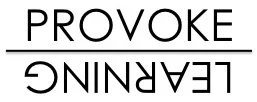Three Classic Myths of Training
Sadly, despite intense focus and hefty price tags many corporate-sponsored training sessions fail to deliver upon their promises. What makes this the all-too-common punchline of a bad training joke? Could there be some classic myths thwarting your best-laid training plans?
Myth 1: If I provide training for my people they will learn.
There are fewer 'life long learners' in our midsts than one might hope. The reality is that if you send your people to training the only thing you can guarantee is that they will be away from the office. We have all been through too many training sessions which resulted in little more than a free lunch and an armful of binders as takeaways. In the end, does anything change for the better? Is that what you were aiming for when you had the altruistic idea to train your people? How can you increase the likelihood that training will increase skills, enhance judgment, and positively impact performance?
Myth 2: Research-based content and models will drive effective behavior.
Remember the USDA's Food Pyramid? Most of us learned about it as children and continued to see it into adulthood. It was plastered on the walls of our school cafeterias and even made occasional appearances on TV. The good news is that the clear graphic and communication campaign clarifying what we should eat in order to be healthy has completely eradicated obesity and bad food choices in all who saw it. Get it? Today, the USDA has retired the Food Pyramid and replaced it with a Food Plate. Clearly, a retooled graphic that looks like a dinner plate will work where the Food Pyramid did not.
Here's the reality:
Models and content, no matter how steeped in research, will not drive behavior if an individual does not choose to embrace said models and content. The key word is choose. Yes, even though training participants may dutifully sit through corporate-sponsored training, their physical presence in the training does not guarantee behavior change. Does attending training guarantee only one thing? (See Myth 1.)
Myth 3: More content covered in less time equals better training.
Your people are smart. They are also busy. Taking them out of the business for training means they are away from the work and clients. So, the best thing to do to try to bring all of this into balance is to cover more content in less time. Here's the reality of the human brain: Just because you flash a PowerPoint slide in front of it doesn't mean the brain 'got it'.
Imagine yourself a relatively good home cook. One day when you're feeling particularly inspired, you get the idea to make something new and adventurous. So, you go onto YouTube and pull up a detailed video showing how to make the recipe, let's say a classic cassoulet. Luckily, you have all the ingredients on hand, and all you need to do is watch the video. So, you watch the video demo from start to finish. When it ends, how ready are you to now make that cassoulet? Sadly, this is exactly how too much corporate training is designed: Here is a cassoulet. Here's what is in it. Here's how to make it. Now, go make it. Do you feel ready?
At times even well meaning internal resources are ill-equipped to handle this myth. The reality is that most 'trainers' are neither experienced enough nor authorized to make the design changes that could make a content-crammed session palatable to learners.
The 'fast and furious' approach doesn't work in the kitchen nor the classroom. However, when you reflect upon training you have seen or sponsored, how many examples of that very approach can you find?
Conclusion
While so much time and money is invested in training employees, these unfortunate myths and others continue to be held as basic truths of training. How can your training be better, sharper and more impactful? If these myths or others are diminishing the impact of your precious training resources, perhaps it's time to think differently. There must be a way to ensure that training actually does create learning. The good news is ... there is. The first step is to, once and for all, call out the myths of training as what they are: False. Let's build and deliver better training that is based in reality.
For more on the challenges of training, see The Junkyard of Training Today.

